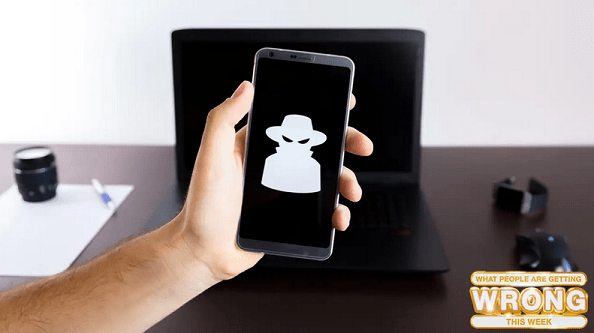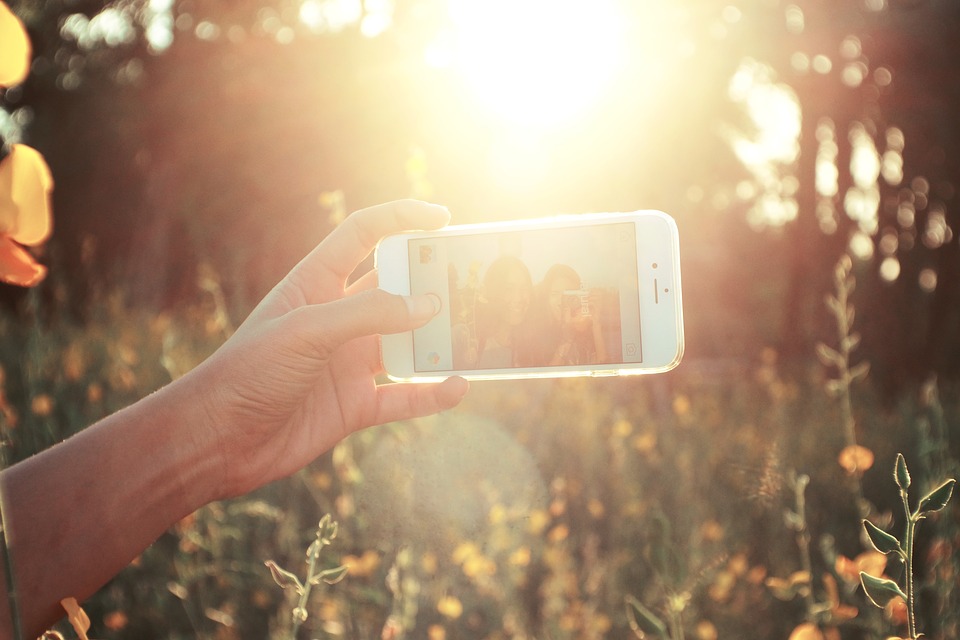Your iPhone is not eavesdropping on your conversations to sell you things. It’s actually much worse.
Yesterday I asked my wife what she wanted for her birthday. She told me she’d like a cordless Dremel. Later, I was served an advertisement for—you guessed it—a cordless Dremel.
Now, we’d never talked about hand-drills before; I have no interest in power tools, I’d never done a search for them or looked at them on Amazon, so the phone must have been listening to what we were saying. It has a microphone right there, so why wouldn’t it be sending our voices to Google headquarters or wherever so they can send me an ad? What other explanation is there? It turns out there is another explanation, and it’s stranger and more insidious than high-tech eavesdropping.
Your phone isn’t listening to you (at least not how you think it is)
Your phone is listening to you at all times, sort of. If it wasn’t, personal assistant apps wouldn’t be able to spring into action when you say “Siri” or “Alexa.” But that’s a different kind of listening. Your device is only always listening for a specific word (or the “wake word”). Only after it hears that do the smarter parts of its digital brain light up.
Your conversations are not routinely transmitted to distant advertising companies so they can pick up random words and serve you commercials. This would take a lot of resources, and probably violate wiretapping and other privacy laws. It also just doesn’t make sense: There would be too much noise in listening to everything everyone says, and not enough signal to bother—especially since advertisers already know everything relevant about you without having listen to you prattle on to your dumb friends.
What data your phone is actually collecting
Instead of eavesdropping and storing your voice as many assume, your apps, phone, watch, game system, computer, and probably your oven are greedily collecting every data point they possibly can, including but not limited to your:
- Location information (both through your device’s location settings and IP address)
- Search history
- Browsing history
- Purchase history
- Physical interactions (that is, how you physically use your device)
This information, taken as a whole, is way more valuable and useful than whatever you talk about, and basically anyone who wants to can buy it. Advertising companies don’t, as a rule, connect this data to anything that can specifically identify you (like your name and address). That wouldn’t be hard to do, but there isn’t much in it for advertisers. They know everything you do, 24 hours a day, so what difference does your name make? The process itself is called fingerprinting, and it allows advertisers to track you across sites and apps.
The scary world of online behavioural advertising
A few basic data points would be all anyone would need to get a rough idea of how to advertise to you. If your location is “Beverly Hills” and you recently spent an hour looking at the Lexus website, you’re probably a rich guy in the market for a new car. In olden times, that’s all they’d need to target you, maybe with a billboard in your neighbourhood or something. But online behavioural advertising collects so much other information—you bought a tent last month, you watched Star Trek on Sunday night—that targeting becomes scarily precise, to the point that it can feel supernatural.
One way to beat tracking is by using a VPN while you browse the internet on your smartphone. A VPN will encrypt your traffic and route it through a remote server, making it difficult for trackers to identify you or your location. PCMag reviewed the top VPNs available on iPhone and Android, ranking the following among the best options:
The hidden connections that bind us together
That explains how ads can be so specific to your interests, but not why you’d get ads after having a conversation with someone. That’s where things get creepier: Advertisers compare your “anonymous” identity with the identities you spend a lot of time around (like your spouse) to predict your buying interests. So they know you hang out at a squash court with Gary (although they don’t know his name) and that Gary spends a lot of time looking at Audi’s website. They know what other rich guys into cars like you and Gary think about, what they buy, and how they feel. So if an ad for an Audi appears, it’s not because Gary told you about his car. It’s because Gary is into Audi, and you hang with Gary.
In the case of my wife and the drill, advertisers know my wife’s ad profile spends a lot of time in the same location as my ad profile. They know she’s been searching for cordless drills online, and that her birthday is a month away. So throwing me an ad for a drill makes sense, even if it feels like an invasion of privacy.
You are depressingly predictable
Even knowing how it works, targeted advertising can seem eerily, impossibly accurate. Sometimes you’re served ads for things you’re just thinking about, that really can’t be connected to your search history, location, who you’re hanging around with, or anything else. But that can be explained too.
“Rich guys like expensive cars” is the kind association humans make, based on past experiences, expectations, and personal bias. But computers don’t have assumptions or the limitations we have. They dispassionately compare mind-bogglingly huge datasets, and I assume they are making connections that are not apparent and can’t be readily explained. Maybe people just like you tend to be interested in learning to play the banjo when they turn 35, and that’s why that ad popped up on your birthday.
The other forces at play: Manufactured coincidence and pattern recognition
Coincidence comes into play somewhat, too. Even if online ads were random, people would still sometimes wonder if their phones were spying on them. It’s human nature to pay attention to unusual occurrences (like an ad for a candy bar popping up just as you thought about having a snack) while ignoring mundane ones (the ad for a movie you don’t care about that preceded it). Given that there is a sophisticated attempt to manufacture meaningful “coincidences,” it shouldn’t be surprising that targeted ads occasionally hit seemingly impossible shots—that’s what they’re aiming for.
Don’t worry, it’s going to get worse
The next logical step in targeted advertising will likely come from generative AI. Advertising companies are already experimenting with using AI to create more effective ad copy and visuals. This CNBC article imagines, “Facebook users in Utah being shown AI-generated graphics of people cycling through desert canyons, while users in San Francisco could be shown cyclists cruising over the Golden Gate Bridge,” but that seems crude and only a few months in the future. When AI gets really good, things will get exponentially more depressing.
Advertisers already know almost everything about you. Now imagine a computer that can craft instant, on-the-fly advertising aimed at you, and only you—not an educated guess based on people like you, but you as an individual. Advertising already feels invasive; imagine ads that target your personal insecurities and secret dreams. Picture a commercial for a Dremel starring your dead mother or your childhood crush. I have a feeling we’re going to wish our phones were literally spying on us.
Until then, things are getting (a bit) better
It’s not all going downhill from a privacy perspective: Tech companies are slowly adding new tools to help users keep their data private from online trackers. Remember Apple’s App Tracking Transparency feature? The company released it two years ago to force apps to ask your permission to track you across apps and websites. (The answer, of course, should be, “Hell no.”)
Its wide adoption pissed off companies like Facebook, whose entire business models relied on selling the data from this tracking. Ever since, your iPhone data has been a little less transparent to the advertisers of the world. (For those on Android, DuckDuckGo has a similar feature to keep your apps a little more secure.)
Privacy controls across all operating systems and browsers have become more robust as well. Windows, macOS, Android, and iOS now offer more controls than ever for seeing which apps request which data points, and blocking those apps from accessing them. Browsers like Safari, Edge, and Firefox continually add new ways to hide your data from trackers even by default, and especially if you go in and tinker with your settings. Plus, many sites and apps that serve you ads now let you turn off targeted advertising: You might still see the same number of ads, but they won’t be based on your identifiers. (No Dremel for you.)
Using a smartphone may never be “private,” but at least there are more tools than ever to make the experience as private as can be. Until the AI get too smart for them, anyway.







